Gauze, a versatile and widely used medical fabric, plays a crucial role in various healthcare settings, from hospitals and clinics to home care. Its unique properties make it an indispensable material in wound care, surgical procedures, and other medical applications.
Understanding the different gauzes and their specific applications is essential for healthcare professionals, caregivers, and individuals seeking to promote optimal healing and patient care. This article provides an in-depth exploration of the various types of gauze available and their wide-ranging applications in the healthcare field.
It will cover the different types of gauze dressings, from gauze pads to absorbent products, and explain their uses and benefits. We’ll also discuss the difference between non-adhesive and self-adhesive dressings and provide a few innovative gauze products to stock up on.
So, discover the different types of gauze dressings, their uses, and their benefits, and stock up on innovative products with this informative guide.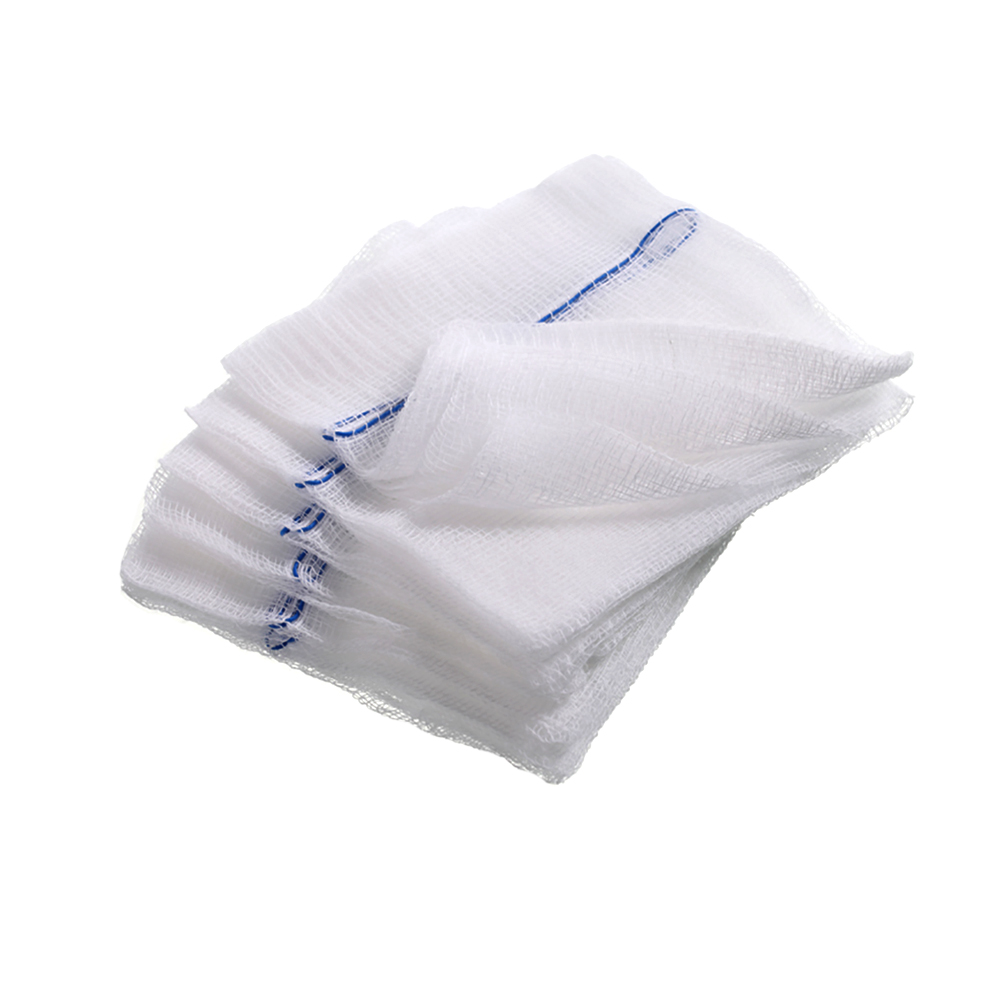
What Is Gauze?
The name “gauze” is frequently used as a catch-all for a variety of dressing items. However, there are several subcategories of gauze items that vary in terms of the fabric’s design or the materials used to make them.
Gauze is characterized by its breathable and absorbent nature. It is renowned for its ability to facilitate wound healing, protect against infection, and provide a sterile environment for medical procedures. The versatility of gauze lies in its different compositions, weaves, sizes, and finishes, which determine its specific characteristics and applications.

Types of Gauze Dressings
Gauze dressings are commonly used wound dressing to cover and protect cuts, abrasions, and other small injuries. On the market, there are various gauze dressings available, each with unique benefits.
The two main categories are classified as either woven or non-woven. Practitioners should distinguish between these divisions since each group’s performance and product qualities may vary.

Non-woven
Non-woven gauze is produced from a mix of synthetic fiber and rayon bonded together without weaving. These dressings, which should not be mistaken with woven gauze, were developed to replace woven goods because they stick to the wound bed less tightly and are more unlikely to leak lint.
So, non-woven gauze is soft, lint-free, and highly absorbent, and the reason why they are best for dialysis, plastic surgery, and dermatological concerns.
Applications
- Wound dressings: Non-woven gauze is often used for sensitive or delicate wounds as it minimizes trauma to the wound bed during dressing changes.
- Debridement: It can be used for gently cleaning and debriding wounds, and removing debris and dead tissue.
- Prepping and cleaning: Non-woven gauze is suitable for prepping and cleaning the skin before medical procedures.
Woven Gauze
The same process has been used for millennia to produce woven goods, which are frequently referred to as absorbent gauze. They are typically constructed of 100% natural tightly woven mesh cotton threads.
Woven gauze dressings sheds fibers when cut and is prone to linting, and has fibers lingering in the wound after dressing removal. So, this type of woven gauze pads has the potential to cause more issues than modern wound dressings. It is the earliest dressing still in use to date. It was used to wrap corpses before burial by the Ancient Egyptians.
Applications
- Basic wound dressings: Woven gauze is commonly used for covering and protecting wounds, absorbing exudate, and promoting a moist wound healing environment.
- Packing wounds: It is also used for packing deep wounds to control bleeding and aid in wound healing.
- Surgical dressings: Woven gauze is utilized for covering surgical incisions and providing a sterile barrier.
Types of Gauze Dressing Products
Gauze products are widely used in medical and other industries, offering a variety of absorbent materials for wound care, cleaning, and reducing pain and inflammation. They cover and protect cuts, abrasions, and other small injuries.
These gauze bandages are made of materials such as cotton, rayon, and polyester, each with its own specialized absorption properties for specific applications.
On the market, there are various gauze dressings products available, each with unique benefits. The different types of gauze dressings include cotton gauze, gauze sponges, gauze pads, impregnated gauze, mesh gauzes, and non-stick dressings.
Gauze rolls, pads, sponges, and compresses are available in different forms, serving multiple purposes depending on their size and thickness.
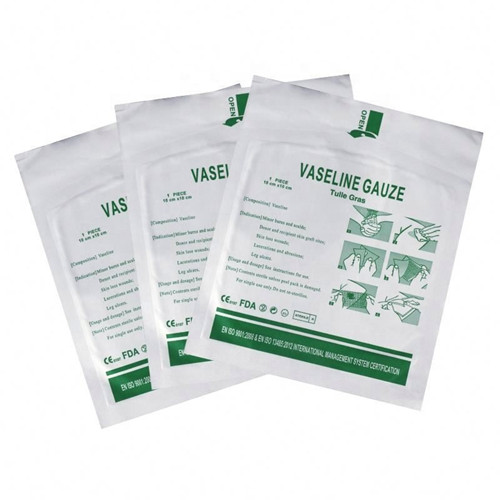
Abdominal (ABD) Gauze Pads
Large, incredibly absorbent gauze pads called abdominal pads are designed to soak up fluid from wounds that are actively draining. They are put on the wound directly, then covered with a secondary dressing, like rolled or conforming gauze.
Conforming and Rolled Gauze
Rolled gauze is an easy-to-wrap lengthy piece of gauze that has been rolled into a handy, straightforward cylinder. It is also braided and non-stretchy, making it better suited for hard body parts like wrists, legs, and arms.
Conforming gauze offers a small amount of elasticity and minimal compression. Because of this, it can adapt to the shape of the body area where it is placed. When treating more mobile or uneven areas, conforming gauze may be useful in the wound healing process. And a primary dressing can be secured in place using either rolled or conformed gauze.
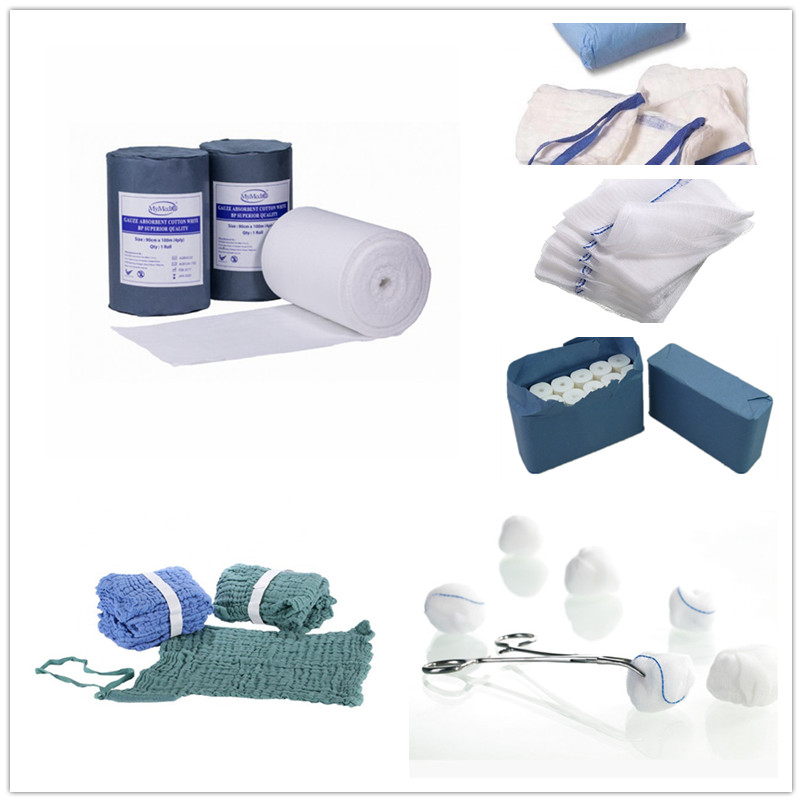
Impregnated Medical Gauze
Impregnated gauze is gauze that is infused or coated with medicated substances or antimicrobial agents (added antibiotic/antiseptic cream) and is ideal for treating infections. Best used while wearing sterile gloves.
Applications
- Antiseptic dressings: Impregnated gauze containing antiseptic solutions can help prevent infection in wounds.
- Hemostatic dressings: Some impregnated gauze products are designed to promote hemostasis and control bleeding.
- Wound debridement: Impregnated gauze with enzymatic agents can aid in wound debridement by breaking down necrotic tissue.
Adhesive Gauze
Well, mainly, there are two types of gauze dressings: non-adhesive and self-adhesive.
Non-adhesive vs Self Adhesive Gauze
Adhesive gauze has an adhesive backing that adheres securely to the skin, providing a protective and secure covering.
Non-adhesive gauzes protect against infection but need secondary adhesives to be correctly placed on wounds. Conversely, self-adhesive dressings provide an extra layer of protection and help to prevent skin irritation or allergic reactions.
Non-adhesive dressings are traditional open weave gauze materials offering padding and cushioning for wound sites. They rely on other materials like tape, bandages, or clips to secure them in place. In contrast, self-adhesive dressings can be held in place without additional components. Depending on the size and shape of the wound, gauze dressings come in different styles and sizes to meet varying needs.
Self-adhesive dressings are typically absorbent materials backed on one side, adhering directly onto the skin. Unlike non-adhesive, self-adhesive dressings are much easier to put on, requiring no assistance from healthcare professionals or family members.
Non-adhesive dressings may be used in cases with drainage. Self-adhesive dressings should not be applied with drainage because they become saturated with fluid, compromising their ability to stick to the skin.
Non-adhesive dressing should be changed more frequently than their self-adhesive counterparts due to their inability to remain securely attached throughout extended periods. As a result, non-adhesive dressing is more suitable for heavily draining wounds as moisture continually evaporates from it, allowing quicker overall healing times.
Applications
- Post-operative dressings: Adhesive gauze is commonly used for covering surgical incisions, providing protection and facilitating wound healing.
- Small wound dressings: It is suitable for small cuts, abrasions, and minor injuries, offering a convenient and secure dressing option.

Specialty Gauze
Specialty gauze refers to specialized gauze products designed for specific medical purposes.
Applications
- Burn dressings: Specialty gauze dressings for burns are designed to provide cooling, soothing, and non-adherent coverage to promote healing.
- Compression bandages: Some gauze products are designed to provide compression for managing edema and venous ulcers.
- Negative pressure wound therapy: Gauze is also used in conjunction with negative pressure wound therapy to promote healing in complex wounds.
Mesh gauzes help drain deep exuding wounds and promote faster healing times. Finally, non-stick dressings reduce skin trauma and pain during removal, making wound care more comfortable.
Applications of Gauze
Gauze is an essential wound care and medical supply that can be used in many different applications as discussed:
Gauze Pads Ideal for Cushioning and Protection
Gauze dressings are an excellent choice for cushioning and protection. These lightweight and breathable fabrics come in various forms, including plain weave, crepe, and reinforced varieties. Gauze pad is especially useful in medical applications since it is absorbent and can easily be stretched to conform to body contours. Sterile options are also available for medical use.
There are many types of gauze pads available in different thicknesses, making them suitable for use on various body areas for cushioning and protection great for larger wounds.
Pre-packaged pads are convenient and easy to use, and they are available in both non-sterile gauze and sterile gauze pads forms with a variety of sizes and shapes to choose from.
Gauze wound dressing are commonly used for wound care and bandaging since they provide lightweight and breathable protection. They can also be used to secure splints or casts or as as moist wound healing by offering protective coverings over wounds to keep them dry.
Additionally, gauze pads can absorb wound drainage if necessary and reduce trauma to the wound site due to their non-adherent nature, making them ideal for cleaning and disinfecting purposes like debriding or packing wounds.
Overall, medical dressing gauze are an excellent choice for cushioning protection because of their lightweight fabric that’s stretchable and able to conform to body contours for a secure fit. The gauze can even be trimmed down or cut into desired size pieces for convenience and versatility.

Gauze Sponges for Wound Care and More
Gauze sponges are an essential tool in the medical field. They are used for various tasks such as wound care and burn protection. Gauze sponges absorb excess fluids and cushion wounds.
There are three main types of gauze: plain, impregnated, and mesh. Each type has its benefits and drawbacks. Let’s explore each type of gauze in detail to help you choose the right one for the task at hand.
- Plain gauze dressings are made with absorbent cotton or rayon material. They can be folded and layered to form thick dressings that absorb fluids and keep wounds moist without sticking to them. Plain gauze comes in many sizes from small pads to large sheets that can be cut down to fit any size or shape of wound. They are also useful for providing coverage for sutures or other medical procedures by being held in place with tape or adhesive bandages.
- Impregnated gauze pads have a layer of medication already applied, usually an antiseptic solution. They are ideal for treating infected wounds or preventing infection during surgery. They provide quick relief from pain associated with burns as well as protection while allowing air flow which helps promote healing and reduce scarring.
- Mesh gauze is created by weaving thin strands of fabric into a net-like structure. This allows airflow while still providing protection from bacteria entering the wound site or suture area during surgery. It also reduces friction between skin tissue and dressings when changed frequently over long periods of time such as those experienced by burn victims who require ongoing treatment until healed completely.
When selecting a type of gauze, consider its intended use. If it is needed just for simple padding, then plain dressings may be sufficient. If infection prevention is important, then impregnated varieties should be chosen instead.
Additionally, consider whether there will be frequent changes required due to swelling or oozing fluid which will require mesh varieties due to their flexibility when removing without damaging new skin tissue.
Finally, make sure to dispose of used gauze safely. Some types come pre-sterilized, but if not, make sure to boil before reuse, so it doesn’t spread germs around your home!
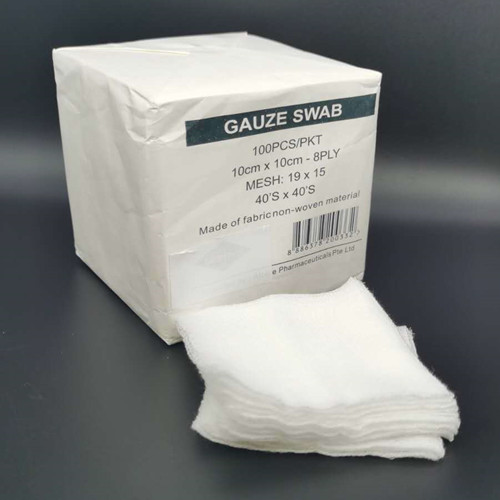
Innovative Gauze Products to Stock Up On
Out of all the types of gauze, loosely woven gauze is the most common one, delivering high absorbency that makes it ideal for wound dressings, swabbing, and padding. Non-woven gauze, on the other hand, is well-suited to compression bandages because it molds well to the area affected. Impregnated gauzes, which contain ointments or solutions to clean and protect wounds, are also available.
Innovative gauze products such as hydrocolloid dressings or antimicrobial woven are important for added protection against infections or faster healing, respectively.
It’s important to have adequate supplies of high-quality gauze that match your requirements, whether for medical-grade or home use products. Also, these supplies should be stored in sealed containers to support their effectiveness over time and be replaced regularly. With these pointers, you’ll be equipped for any medical emergency!
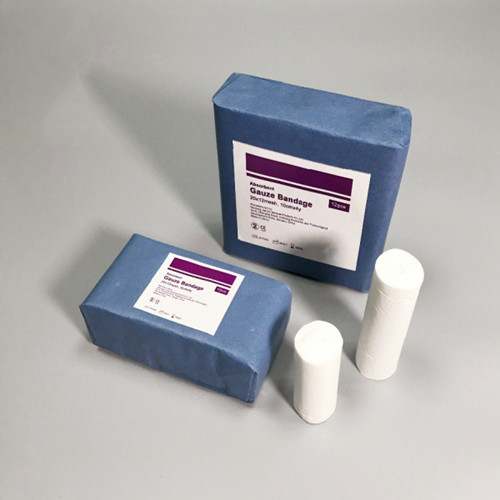
Considerations Before Purchasing Gauze Products
Gauze dressings have a wide range of applications in wound care, surgical procedures, and medical interventions. Some considerations to keep in mind when using gauze dressings include:
Proper wound assessment
Before selecting a gauze dressing, it is crucial to assess the wound type, size, depth, and exudate level to determine the most appropriate choice.
Absorbency and exudate management
Different types of gauze absorb wound exudate differently as they offer varying levels of absorbency. Choosing a gauze dressing with the right absorbency helps manage wound exudate effectively and maintain a moist wound environment.
Frequency of dressing changes
The frequency of dressing changes depends on the wound characteristics and the chosen gauze dressing. Regular assessment is necessary to ensure proper wound healing and prevent infection.
Patient comfort and sensitivity
Some individuals may have sensitivities or allergies to certain gauze materials. It is essential to consider patient comfort, skin integrity, and any specific needs when selecting a gauze dressing.
Adherence and non-stick properties
Non-woven or silicone-coated gauze dressings are often preferred for wounds with fragile or sensitive skin, as they minimize trauma during dressing changes.
In Summary
Gauze dressings are essential medical supplies with multiple applications. Different types of gauze from sponges to absorbent products are available to cater to various needs. Non-adhesive and self-adhesive dressings offer varying levels of protection and comfort for wounds. Innovative gauze products like impregnated and mesh varieties provide additional benefits such as faster healing times and can be used for wound care and burn protection.
It is crucial to conduct thorough research on each type to comprehend the differences and their applications before buying the best-suited product for specific needs. Stock up on these versatile and essential medical supplies now!

